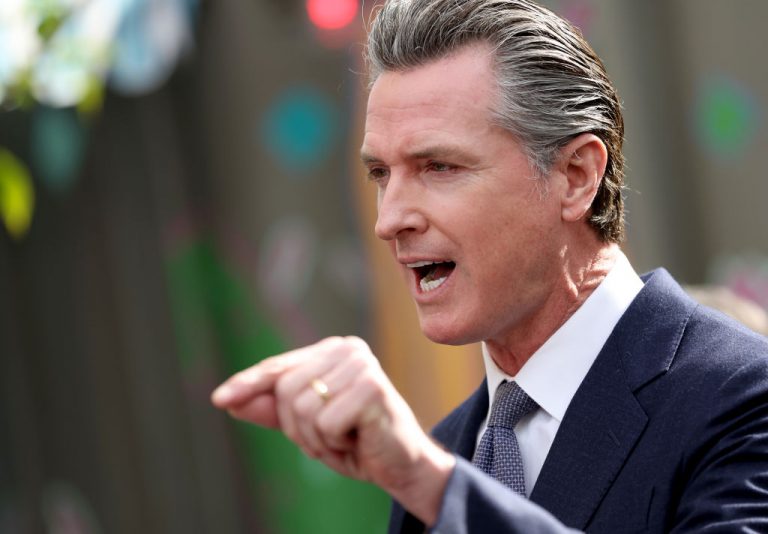California Governor Gavin Newsom’s ambitious plan to transition from combustion engine cars to electric ones by 2035 will put 64,700 people out of work, most notably 32,000 mechanics, state officials figured out.
“This is a hugely important inflection point. This rule finally, definitively puts us on the path to 100% zero-emission vehicles,” Daniel Sperling, a member of the Air Resources Board, the so-called clean air agency of the Government of California, told CalMatters in an April 13 article.
Newsom himself additionally framed the mandate as an “opportunity to transform” the state’s economy, Breitbart noted in 2020.
In 2020, Newsom signed an Executive Order effectively banning sales of cars driven by internal combustion engines and, instead, turning to electric, or “zero-emission” cars completely, a move that espouses saving the planet, but is also a lot of work.
According to the California Air Resources Board estimations, by 2040, 64,700 positions will be eliminated due to the mandate and 24,900 will be created, resulting in a net loss of 39,800 jobs, CalMatters reported.
Success
You are now signed up for our newsletter
Success
Check your email to complete sign up
The impact is not as far away as it may appear. If signed into law, starting in 2026, 35 percent of all new vehicles sold in California will be required to be zero-emission, a figure that scales through to 100 percent by 2035.
Mechanics take the hardest blow
However, the mechanics’ scene will be hit the hardest, as battery-powered vehicles, despite being heavy, clumsy, and hugely environmentally unfriendly, are superior in one aspect compared to their internal combustion counterparts: namely that they require far less maintenance, saving a lot of hassle, money—and jobs.
According to CalMatters, currently, the automotive service industry employs some 60,910 workers and more than half, namely 32,000, of those workers will be lost if Newsom’s bill is signed into law this summer.
MORE ON ELECTRIC VEHICLES
- Looming Electric Vehicle Battery Shortage Could Last Decades, Rivian CEO Warns
- Years of Surging Lithium Prices Show Signs of Turbulence as Electric Vehicle Makers Adapt
- Tesla Recalls 300,000 Made-in-China Model 3 and Model Y Cars
- Infra Bill EV Policy to Look Into China’s Human Rights Abuses, Biden Wants 50% New Vehicles to be Electric
“Many mechanics who have started working see that there’s not a long-term future in the auto repair business, with hybrids and electric cars coming out,” Alex Dirige, a 67-year-old mechanic from San Francisco, told the newspaper.
“The electric vehicle repair market is just about nonexistent. A lot of them would love to be in the field, but they might choose to go into other types of employment.”
Another 38,669 assignments will be lost in the retail trade sector, which is composed of gas station employees and car and car parts vendors by 2040, comprising 2 percent of all retail workers.
Moreover, because of the expected dwindling of the gas tax revenue, another 20,381 government jobs are expected to be cut, the outlet attested.
And the winner is…
Of course, there will also be winners. Power industry companies such as California Edison and Pacific Gas & Electric will profit greatly and realize a job growth of 5,600 because of a need to augment the power grid to accommodate electric vehicles.
On top of that, insurance companies and the construction business will see 1,700 and 3,600 new jobs respectively, the Board assessed.
However, this is when all goes according to plan, but some have serious doubts about the feasibility of the ambitious 2035 agenda.
At present, battery-powered cars make up only 3 percent of the Californian car fleet. However, they made up 12.4 percent of all car sales in the state last year, so there is a notable upsurge underway, the news media said.
“It’s nearly impossible to make all these changes by 2035,” Dirige said. “We don’t have the infrastructure to go to all-electric vehicles. We barely have it now. And if you ask people, they’re afraid they’re going to end up with a car that is going to run out of electricity, and they’ll be stuck somewhere.”
















